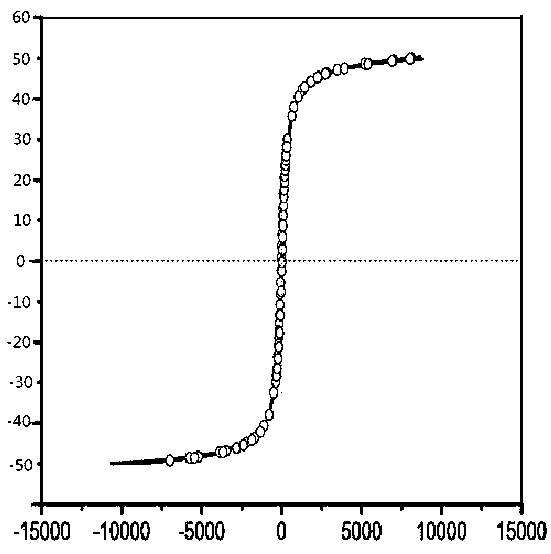Magnetic corpuscles coupled with streptavidin and biological isolation and immunoassay method
A technology of streptavidin and magnetosomes, applied in biological testing, measuring devices, analytical materials, etc., can solve the problems of extreme reaction temperature, use of toxic reagents, complex and laborious post-modification, etc., and achieve low superparamagnetism, The effect of good biocompatibility
- Summary
- Abstract
- Description
- Claims
- Application Information
AI Technical Summary
Problems solved by technology
Method used
Image
Examples
Embodiment 1
[0026] Magnetic Separation Column Chromatography Separation of Magnetosomes
[0027] Magnetotactic bacteria ( Magnetospirillum magneticum AMB-1) strains were inoculated in 5 L enhanced magnetic
[0028] In the spirochete culture medium, the total amount of iron quinate added was 60 μmol / L, and cultured at 26°C for 96 h. After the cultivation was completed, the fermented broth of the magnetotactic bacteria was centrifuged at 3000 r / min for 25 minutes, and then the bacteria were collected by means of a energized solenoid. The bacteria were suspended in HEPES buffer at a mass-volume ratio of 1:8. The magnetosomes are collected after crushing by a high-pressure homogenizer with a pressure of 80 MPa, and then separated by magnetic separation column chromatography.
Embodiment 2
[0030] Separation of Magnetosomes by Supercritical Fluid Extraction
[0031] Magnetotactic bacteria ( Magnetospirillum magneticum AMB-1) strains were inoculated in 5 L enhanced magnetic
[0032] In the spirochete culture medium, the total amount of iron quinate added was 60 μmol / L, and cultured at 26°C for 96 h. After the cultivation was completed, the fermented broth of the magnetotactic bacteria was centrifuged at 3000 r / min for 25 minutes, and then the bacteria were collected by means of a energized solenoid. The bacteria were suspended in HEPES buffer at a mass-volume ratio of 1:8. The magnetosomes are collected after crushing by a high-pressure homogenizer with a pressure of 80 MPa and then separated by supercritical fluid extraction. (Carry out supercritical fluid extraction with carbon dioxide, add 5% ethanol solution, extraction temperature is 50°C, extraction pressure is 13MPa, extraction time is 15min)
Embodiment 3
[0034] Separation of Magnetosomes by Subcritical Fluid Extraction
[0035] Magnetotactic bacteria ( Magnetospirillum magneticum AMB-1) strains were inoculated in 5 L enhanced magnetic
[0036] In the spirochete culture medium, the total amount of iron quinate added was 60 μmol / L, and cultured at 26°C for 96 h. After the cultivation was completed, the fermented broth of the magnetotactic bacteria was centrifuged at 3000 r / min for 25 minutes, and then the bacteria were collected by means of a energized solenoid. The bacteria were suspended in HEPES buffer at a mass-volume ratio of 1:8. Magnetosomes are collected after crushing by a high-pressure homogenizer with a pressure of 80 MPa and then extracted and separated by subcritical fluid. (Subcritical fluid extraction with butane, extraction temperature 43°C, extraction pressure 3 MPa, extraction time 30min)
PUM
| Property | Measurement | Unit |
|---|---|---|
| length | aaaaa | aaaaa |
Abstract
Description
Claims
Application Information
 Login to View More
Login to View More - R&D
- Intellectual Property
- Life Sciences
- Materials
- Tech Scout
- Unparalleled Data Quality
- Higher Quality Content
- 60% Fewer Hallucinations
Browse by: Latest US Patents, China's latest patents, Technical Efficacy Thesaurus, Application Domain, Technology Topic, Popular Technical Reports.
© 2025 PatSnap. All rights reserved.Legal|Privacy policy|Modern Slavery Act Transparency Statement|Sitemap|About US| Contact US: help@patsnap.com


